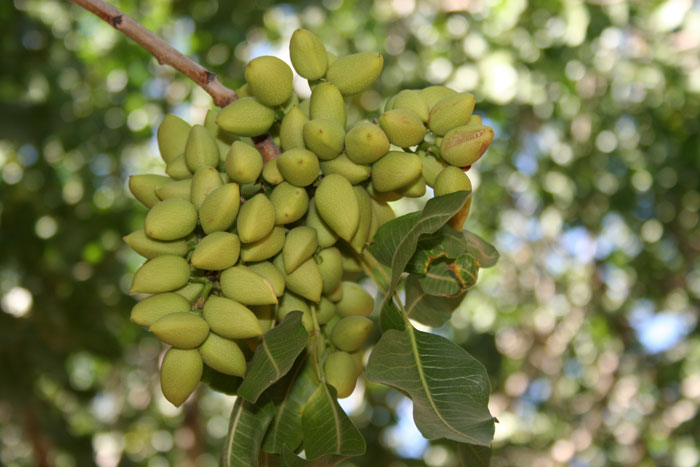August 3, 2016

Following a strong start around mid-July, about 7-10 days earlier than usual, nut fill in the pistachio orchards in Kern and Kings counties was expected to be completed by the end of July, reports veteran pistachio grower and consultant Carl Fanucchi of Fanucchi Diversified Management, Inc. in Bakersfield, Calif.
“The crop appears quite good in most areas,” he says. “Although the nuts aren’t big, most fields have many large clusters. I think we’ll put a lot of nuts in processors’ hands this year.”
Many industry observers expect pistachio growers to harvest a minimum 650 million pound (in-shell) crop this year, notes Fanucchi. He says production could actually reach 700 million pounds or more statewide.
This compares to last year when drought and the lack of adequate winter chilling hours limited total California pistachio production to a disappointing 271 million pounds, about 40 percent below earlier projections.
“This year the supply of federal and state surface water is considerably better than the last two years, but it’s nowhere near the full allocation,” Fanucchi says. “Growers are still pumping heavily from deep wells.”
As growers have drawn down groundwater supplies to irrigate crops, the quality of pumped water has declined. This, along with the shortage of water to flush salts out of the soil, has led to increased salinity levels in the root zone in many orchards, he says.
However, almond orchards are suffering more from this than pistachio trees which can better handle higher saline conditions.
“I haven’t seen any impact of higher soil salinity in mature pistachios,” Fanucchi says. “Still, the drought is providing a good test of just how salt-tolerant pistachio trees are. In some places, growers are irrigating with just salty water.”
This season, growers in the southern San Joaquin Valley haven’t seen the unusually high number of blank nuts found last year. Fanucchi attributes last year’s blank problem to insufficient winter chilling hours in pistachio orchards south of Madera County.
This year, the proportion of blank nuts he’s seen was in the typical 10 percent to 20 percent range.
Fanucchi says relatively few early splits and the lack of insect pressure bode well for the quality of the 2016 crop. So does the widespread use of AF36, a wheat-based biological control agent that helps protect pistachio nuts from contamination with cancer-causing aflatoxins.
Growers with the Golden Hills variety which continues to expand in acreage and the Kerman variety are more likely to double shake at harvest time, especially if the crop is a largebig one, Fanucchi believes.
The idea is to harvest early-maturing nuts first at peak quality rather than face the increased threat of damage from rain and Navel orangeworm by waiting until the remaining nuts are ready.
“This way you can get a large portion of the crop with a light first shake, reducing the amount of nuts at risk of damage,” Fanucchi says.
“Considering the bonus paid for high quality nuts and the relatively low cost to tree shake, a two-shake harvest is likely to make sense if you expect production around 2,500 pounds per acre or more.”
Growers in his area who opt for the two-shake approach could begin harvesting Golden Hills from Aug. 10-15, and could begin shaking Kerman trees Aug. 20-25, Fanucchi says.
You May Also Like




